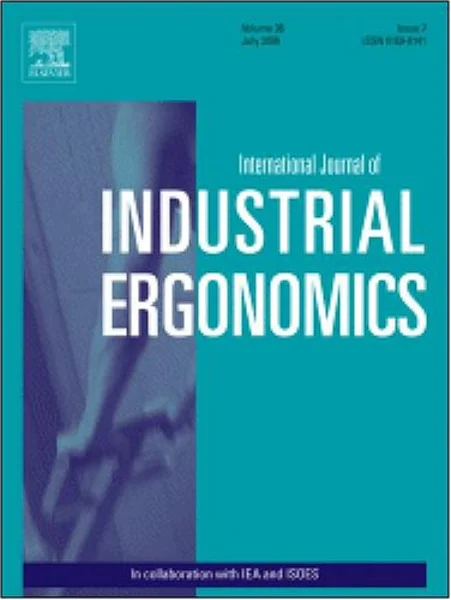-
passive stiffness changes in the lumbar spine and effect of gender during prolonged simulated driving
جزئیات بیشتر مقاله- تاریخ ارائه: 1390/02/13
- تاریخ انتشار در تی پی بین: 1390/02/13
- تعداد بازدید: 353
- تعداد پرسش و پاسخ ها: 0
- شماره تماس دبیرخانه رویداد: -
gender differences in lumbar and pelvic posture have been reported previously in prolonged sitting, both in an office chair and automobile seat. to date, it is not known whether these postural exposures during prolonged driving affect the passive lumbar spine flexion stiffness. the purpose of this study was to examine time-varying responses of passive lumbar spine stiffness, lumbar spine and pelvic postures during a 2 h simulated driving trial. secondary goals investigated the influence of gender on lumbar spine stiffness, discomfort scores and seat pressure profiles. twenty (10 males, 10 females) subjects were recruited to complete a 2 h simulated driving task. passive lumbar range of motion was measured on a customized frictionless jig before, halfway through and at the end of 2 h. during driving there was a time-varying difference in the lumbar flexion angles adopted by the gender groups. a significant interaction (p = 0.0458) was found for gender and time with women being found to sit significantly different than males in the second hour of driving exhibiting greater maximum lumbar flexion (60.0% rom (±1.27) than men 50.0% rom (±1.5). both men and women demonstrated similar passive stiffness changes characterized by an initial increase in transitional zone stiffness after 1 h (+0.1 nm/degree for males and +0.3 nm/degree for females, p = 0.2372). over 2 h of driving there was a non-significant trend of genders to respond differently to the seated exposure. specifically transitional zone stiffness was found to increase in males (0.86 (sd 0.31) to 0.92 (sd 0.31) nm/degree) and decrease in females (0.81 (sd0.88) to 0.73 (sd 0.52) nm/degree) (p = 0.1178). differences in lumbar posture and passive stiffness over 2 h of simulated driving were demonstrated between genders in this study. relevance to industry gender specific ergonomic interventions should be investigated for the automobile seat. additionally, the changes in passive stiffness induced by prolonged seated exposures could introduce altered low back kinematics in activities performed after a long car ride. lifting scenarios such as luggage unloading or parcel delivery are common activities immediately after driving. the altered stiffness of the lumbar spine in these activities could have potential ergonomics and injury related implications for both the general population and professional drivers.
مقالات جدیدترین رویدادها
-
استفاده از تحلیل اهمیت-عملکرد در ارائه الگوی مدیریت خلاقیت سازمانی و ارائه راهکار جهت بهبود
-
بررسی تاثیر ارزش وجوه نقد مازاد بر ساختار سرمایه شرکت های پذیرفته شده در بورس اوراق بهادار تهران
-
بررسی تأثیر سطح افشای ریسک بر قرارداد بدهی شرکت های پذیرفته شده در بورس اوراق بهادار تهران
-
بررسی تأثیر رتبه بندی اعتباری مبتنی بر مدل امتیاز بازار نوظهور بر نقد شوندگی سهام با تأکید بر خصوصی سازی شرکت ها
-
تأثیر آمیخته بازاریابی پوشاک ایرانی بر تصویر ذهنی مشتری پوشاک ایرانی (هاکوپیان)
-
ارزیابی نحوه مدل سازی سیستم های مهاربندی cbf و ebf در قاب های بلند مرتبه بر عملکرد لرزه ای آن ها با استفاده از روش دینامیک فزآینده
-
کاهش ضایعات محصولات کشاورزی راهبردی در جهت توسعه کشاورزی و امنیت غذایی
-
بررسی موقعیت قرارگیری دیواره آب بند نسبت به محور سد بر دبی و سرعت نشت، تنش و فشار آب منفذی (مطالعه موردی سد سارادان)
-
cosmic string passage through the earth and consequent global earthquake
-
stability of equilibrium points in a cr3bp with oblate bodies enclosed by a circular cluster of material points
مقالات جدیدترین ژورنال ها
-
مدیریت و بررسی افسردگی دانش آموزان دختر مقطع متوسطه دوم در دروان کرونا در شهرستان دزفول
-
مدیریت و بررسی خرد سیاسی در اندیشه ی فردوسی در ادب ایران
-
واکاوی و مدیریت توصیفی قلمدان(جاکلیدی)ضریح در موزه آستان قدس رضوی
-
بررسی تاثیر خلاقیت، دانش و انگیزه کارکنان بر پیشنهادات نوآورانه کارکنان ( مورد مطالعه: هتل های 3 و 4 ستاره استان کرمان)
-
بررسی تاثیر کیفیت سیستم های اطلاعاتی بر تصمیم گیری موفق در شرکتهای تولیدی استان اصفهان (مورد مطالعه: مدیران شرکتهای تولیدی استان اصفهان)
-
بررسی الگوهای افشای اختیاری و افشای اطلاعات مرتبط با شیوه تامین مالی در گروه های مختلف فعالیت در بورس تهران
-
بررسی ارتباط حجم اقلام تعهدی اختیاری و بهره وری مدیریتی در شرکتها
-
بررسی تأثیر مهارت های مدیریتی بر کسب و کارهای آنلاین (مطالعه موردی: بازی های دیجیتال)
-
evaluation of slippage resistance of the runway of the international airport of imam khomeini
-
kinetic study of the adsorption of zinc and copper ions on to activated carbon prepared from date pits




سوال خود را در مورد این مقاله مطرح نمایید :